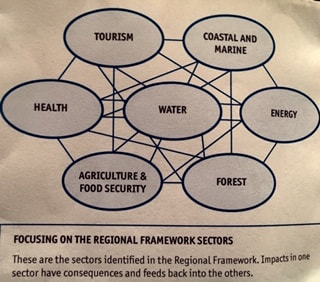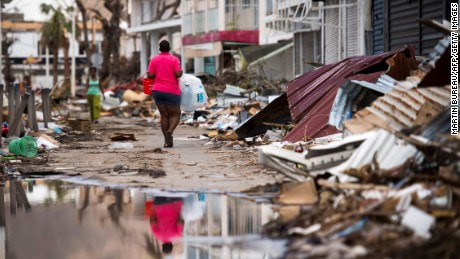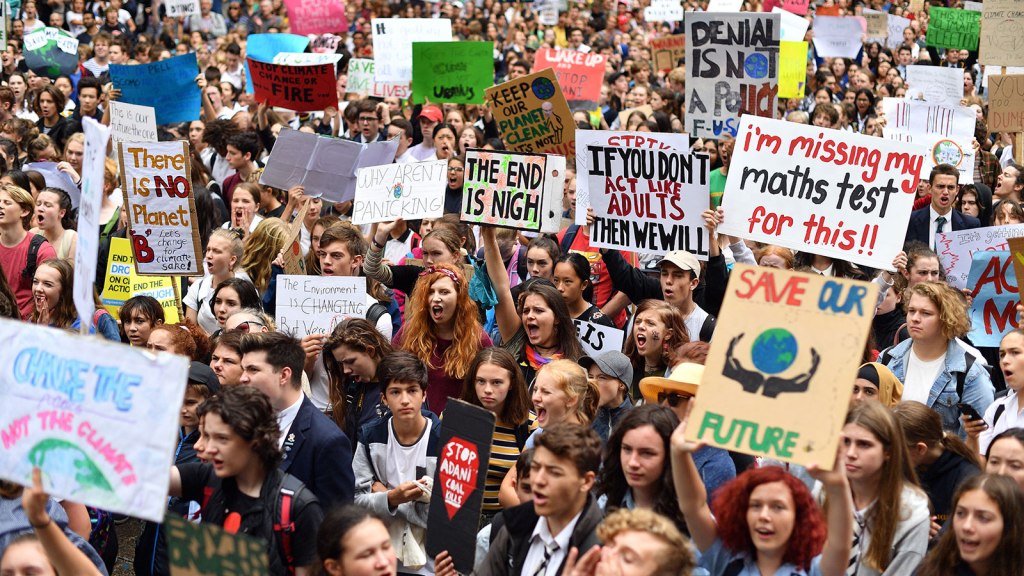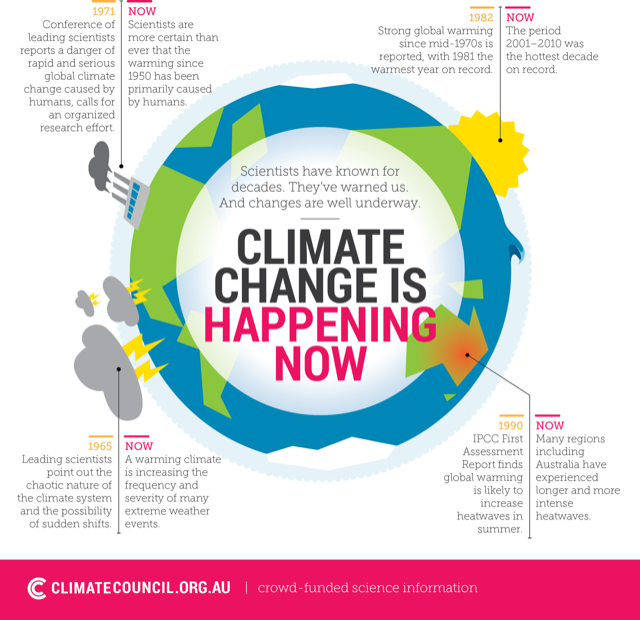|
The UN Climate Action Summit (September 23) and follow up discussions at the UN General Assembly and the media are attracting worldwide attention. UN Secretary-General António Guterres requested leaders from government, business and civil society to come up with plans to address the global climate emergency. Chief among them was to increase their commitments to achieve the goals of the Paris Agreement (2015) “to work toward reducing emissions by at least 45% by 2030 and to essentially zero by mid-century". In the intervening period, there. has been a hive of activities that goad the Caribbean Region to consolidate its climate advocacy and action. The outcomes from each of these activities combine as a clarion call to accelerate the response to Climate adaption and resilience with regional partnerships and global solidarity as imperatives.
First , The Youth Climate Summit was an historic event on the weekend leading up to the UN Secretary-General’s Climate Action Summit. It was complemented by the Youth Climate Strikes in major cities throughout the world. At the centre of these platforms was 16 year old Greta Thunberg from Sweden whose stirring address to the UN Summit resonated among all stakeholders, including entrepreneurs and change-makers mindful of protecting our planet. Ms. Thumberg demanded swift action to fight climate change and chided leaders for yielding few commitments for environmental overhaul. See her emotional speech: https://www.youtube.com/watch?v=43q15ncwzWo Second was the launching of the European Union funded/Caribbean Community Climate Change Centre (5Cs) Project, Enhancing Climate Resilience in CARIFORUM Countries that took place in Barbados. Its aim is to establish a Global Water Partnership with Caribbean organizations forming a focal point. This is the latest in a series of programmes pioneered by 5Cs which include an Electric School Bus Pilot and a grid -interactive Solar PV System for Schools and Health Clinics in Antigua and Barbuda; Transitioning to National Energy Security : Bartica as a Model Green Town in Guyana; Implementing a Solar Electricity System for a Low Income Residential Development in Ouanaminthe in Haiti ; Solar Carport and Electric Vehicle Charging Station in St Lucia; and a Salt Water Reverse Osmosis system (SWRO) Destalinization powered by Photo Voltaic (PV) Renewable Energy System in St Vincent and the Grenadines. Third is the article in Forbes Magazine reporting that of the top thirty global polluters per capita, ten are from the Caribbean region. These are Trinidad & Tobago, Antigua & Barbuda, St. Kitts & Nevis, Guyana, Barbados, St. Lucia, Bahamas, Grenada, Anguilla and Aruba. It was revealed that every year, these ten island nations generate more plastic debris than the weight of 20,000 space shuttles. There is no doubt need for waste management and waste infrastructure, such as garbage collection, recycling centres and secure landfills to be improved. However, it was refreshing to note the balanced conclusion arrived at by the author that is important to arguments for climate justice: "It is too simplistic to make global comparisons based on absolute numbers. Ranking total plastic waste production per country masks global systems of inequality and overlooks the vulnerability of small, seemingly “insignificant” coastal communities. Rather than vilifying individual countries, we must deconstruct systems of inequality that perpetuate plastic pollution and increase vulnerability among select populations" https://www.forbes.com/sites/daphneewingchow/2019/09/20/caribbean-islands-are-the-biggest-plastic-polluters-per-capita-in-the-world/#182ebff3774b Fourth, there was a most informative symposium Global Partnership for Climate Action Symposium co-sponsored by University of the West Indies and State University of New York (SUNY) at SUNY. It is a capstone for the Caribbean response to the three types of activities above. GOFAD could only inadequately summarize the robust discussions by highlighting the following takeaways:
After listening to the absorbing panel discussions at the UWI-SUNY symposium I wrote the following note to my colleagues "I feel even more justified in promoting the dream of a Caribbean Pan Caribbean Partnership for Climate Action".
2 Comments
9/19/2019 Innovation and Climate Resilience in the Caribbean. Is a Pan Caribbean Climate Action Partnership the answer?Read NowIn our Blog last week (September 9), we provided a sketch of the building blocks for climate resilience with special reference to the Caribbean. These building blocks it was suggested, revolved around (a) proposals for implementing the Caribbean Community Climate Change Centre Strategic Plan 2011-2021, (b) tapping the expertise in climate science at UWI and other institutions of higher education and research (c) scaling up the prominence of CARICOM's leadership in the Small Island Development States Climate agenda and (d) advocating for the delivery of global commitments such as the Paris Agreement, the UN and Multilateral agencies.
Consolidating the Building Blocks at the Regional level It is important to note that the building blocks are consolidated in response to a mandate from CARICOM Heads of Government for the Caribbean Community Climate Change Centre (5Cs) to:
Country initiatives as potential models for regional From among the multitude of programmes, being undertaken by CARICOM Countries, the following indicate a sample of initiatives:
The Need for Community Engagement In a very informative blog, "A call to Arms" - (September 10) , Winsome Leslie advised that lessons could be learned from community education programmes used in the islands of the South Pacific. She also recommends microfinancing institutions to expand a suite of products to include green loans to finance energy efficient solar projects to help the Caribbean to reduce its dependence on fossil fuels. See A Call to Arms -Time to Mobilize at the Local Level for Climate Resilience https://www.linkedin.com/pulse/call-arms-time-mobilize-local-level-climate-winsome-leslie How will the Caribbean Proceed It is clear from the building blocks, their consolidation in regional initiatives, the multitude of country programmes and the suggestion for community engagement, that CARICOM Countries are fully aware of the challenges and the solutions related to climate resilience. A major problem reflected in the deleterious consequences of climate change is illustrated most recently in the fury of Hurricanes Irma and Maria (2017) and Dorian (2019). These were mainly due to circumstances not created by the Caribbean and over which it has little control. The architecture for a Caribbean response rests in the underlying vision set out in the Strategic Plan for Climate Change in the Caribbean 2011-2021 by the 5Cs. It recommends pursuing the "three one's" principle: one coordinating unit, one strategic plan and one monitoring and evaluation system. It is a policy that was successfully implemented by the Pan Caribbean Partnership for HIV in the Caribbean with very positive results. It requires a concerted effort for synchronizing policies, rationalizing programmes across sectors and institutions and sourcing funds. While GOFAD has some thoughts about the architecture for such a Pan Caribbean Climate Change Partnership, it is important to first engage the focal points for Climate Change, the CARICOM institutions - 5Cs and CDEMA and UWI. We will return to this issue of "functional cooperation and Climate action in the region. What will this Cost? A major question, how much will functional cooperation climate action cost is beyond the scope of this blog. The Caribbean countries and institutions are aware of funding options. Indeed, they have sourced support from the Global Environmental Facility (GEF); the Canadian Climate Change Development Fund; The Commonwealth Climate Finance Hub (2016) to support climate adaptation and mitigation; the Caribbean Climate Smart Accelerator (2018) in response to making the Caribbean the first climate smart zone, and the Regional Climate Resilient Building Facility (2019) to provide technical assistance and disaster insurance support. The Global Commission on Adaptation (GCA) issued a report (September 10). The Commission led by former UN Secretary General Ban KI moon and including Dr. The Hon Keith Mitchel, Prime Minister of Grenada calls for global leadership on climate resilience. It finds that adaptation can lead to significant economic returns and that investing USD1.8 trillion globally from 2020 to 2030 in five climate adaptation areas could result in USD 7.1 trillion in net benefits. It identifies the five areas: early warning systems, climate-resilient infrastructure, improved dryland agriculture, mangrove protection and investments in increasing water resource resilience. It states that these represent only a portion of total investments needed and total benefits available. The Caribbean environmental and development scientists need to come up with a cost -benefit projection for achieving climate resilience in accordance to the 5Cs strategic plan Conclusions Filling the gaps for an effective architecture for a Pan Caribbean Climate Change Partnership and for sustainable funding in support of Climate resilience is a work in progress. Successful outcomes however can be achieved with political will and a commitment to unravelling the impediments to functional cooperation. This requires innovation that is transformative. In the final analysis, global solidarity is the main solution to this global problem. Eddie Greene 9/11/2019 Reflections on Climate Resilience in the Caribbean and indications for innovative ApproachesRead Now The Bahamas tragedy following the devastating effects of Hurricane Dorian has brought into stark reality the unrelenting havoc that natural disasters have reeked on the Caribbean Region in recent years. The Special Report on Climate Change and Land ( SRCCL) from a meeting of the Intergovernmental Panel on Climate Change (IPCC) comprising leading international experts held in Geneva, July 2019, is very informative https://www.ipcc.ch/report/srccl/.reemphasizes. It identifies the major reasons for the devastating impact that global warming is having on the Caribbean. Among them are coastal erosion resulting from sea level rise and tropical hurricanes, which greatly threatens lives and livelihoods in the region and degradation of ecosystems, both marine and land. They both harm industries on which we rely, such as fishing and farming, not to mention tourism. Overall, the Caribbean is particularly vulnerable to greater health, environmental and economic challenges because of these climate and land changes. Before actually venturing to establish innovative approaches to climate action in the Caribbean, there is need to identify important building blocks. The Special Report on Climate Change and Land, the second of three Reports from the IPCC is based on scientific studies and empirical outcomes. The First, Global Warming of 1.5° C was issued in September 2018. The third is on Ocean and Cryosphere in a changing Climate, which is expected to be released later this month. Of importance to the Caribbean is the active engagement of UWI academics among others in the work of this high level international Panel. In addition, at the UN High-Level Political Forum 2019 (HLPF) on Sustainable Development, where UWI co-hosted a symposium, Research and Innovation 4 Climate Action, which showcased research initiatives of members of the Global University Consortium on SDG #13 and highlighted the synergies between SDGs #4, #13 and #17. Also, in July 2019, UWI hosted the first-ever meeting of Universities across the Commonwealth to collaborate on climate challenges and resilience in their countries involving representatives from approximately 500 institutions in 50 countries. UWI's efforts to aid in developing a culture of resilience and planning in the Caribbean are adequately reflected in its Triple A Strategy (Strategic Plan 2017–2022). Major Illustrations of Functional Cooperation in Migration and Adaptation provide lessons for Resilience These more recent contributions to the Climate Change debate are built on the foundations of earlier regional initiatives. Chief among these is the landmark Global Small Island Developing States (SIDS) Conference held in Barbados in 1994. It resolved to give priority treatment to the issue of climate change based on its potential to severely disrupt the development efforts of Small Island Development States (SIDS) and the low lying coastal states. It included the Caribbean Planning for Adaptation to Climate Change (CPACC) project, funded by the Global Environmental Facility (GEF); Adapting to Climate Change in the Caribbean (ACCC) project, funded by Canadian Climate Change Development Fund 2001-2003 and Mainstreaming Adaptation to Climate Change project also funded by GEF 2004-2007. These projects led to the establishment of a CARICOM wide network of monitoring stations; development of regional capacity for coral reef monitoring; vulnerability assessments; economic valuation of environmental services; the articulation of national climate change adaptation policies and implementation plans, and increased public awareness of climate change issues in the Region. Consolidating the Regional Response: The Caribbean Community Centre for Climate Change as a catalyst Notwithstanding the projects’ successes, it was clear that a more permanent strategy was needed to respond to the effects of Climate Change in the Caribbean. The vision and mission of the Caribbean Community Climate Change Centre (5Cs), together with those of complementary institutions and programmatic priorities have evolved as critical factors of a Climate Action Strategy Established in 2006 as a CARICOM Institution, the 5Cs under the leadership Dr Ken Leslie its CEO, provided the basis for a more coherent accelerated regional response. This is fully illustrated in the Caribbean Strategic Plan of Climate Change 2009-2021, formulated by the new leadership supported by the CARICOM Task Force for Climate Change in 2008. It identified a vision around the Three Ones Principle - One Coordinating Mechanism, One Consolidated Plan and One Monitoring and Evaluation Framework. Its mission based on 5 implementable pillars emerging from the 2009 Lilliandaal (Guyana) Declaration was approved by CARICOM Heads of Government in 2012. They include:
Complementary Institutional developments include:
Programmatic Priorities include:
Setting the Scene for innovations in Climate Action We have sketched some of the issues leading up to the accelerated approach to climate action in the Caribbean. In so doing, we drew upon some leading international activities involving Caribbean experts; the pursuit of functional cooperation in mitigation and adaptation, consolidating the regional response through CARICOM institutions such as 5Cs and CDEMA; engaging complementary institutions; and focusing on programmatic priorities. These are the prerequisites for effective innovations. Averting another climatic catastrophy such as those experienced in The Bahamas is another matter. 9/5/2019 Hurricane Dorian and 'The Bahamas Tragedy' Trigger Perspectives on Achieving Climate ResilienceRead Now Overview As we write this blog, it is clear that Hurricane Dorian has created havoc in The Bahamas with consequences for the Caribbean Community (CARICOM) as a whole. Preliminary reports indicate that five people are confirmed to have died in the storm; storm surges of 12 to 18 feet (4-5 meters) above normal hit Grand Bahama Island and up to 13,000 homes have been destroyed or severely damaged. Prime Minister, Hubert Minnis, described the impact of the hurricane as a “historic tragedy in parts of our northern Bahamas’. For this, we at GOFAD join others in the CARICOM Region and around the world in expressions of sympathy and solidarity to the Prime Minister and the people of the Bahamas. WATCH: Dorian batters the Bahamas, killing five The frequency and severity of these catastrophic events are illustrations of the vulnerability of the Caribbean. Since 1950 approximately 300 natural disasters have hit the region, killed some 250,000 people and affected more than 24 million through injury, death, or loss of homes and livelihoods. According the World Development Report (2014), the Caribbean islands are among the 25 most-vulnerable nations in terms of disasters per-capita or land area, with their frequency and damages exceeding those for other small and larger states. An IMF study (2016) found seven Caribbean islands are at extreme or high risk of natural disasters, with vulnerability gauged by disaster frequency and impact. It shows that in many cases disaster damages exceed the size of the economy. This is borne out by more recent events. For Dominica, after the category 5 Hurricane Maria hit the region in September 2017, damages were estimated to be more than 200 percent of its GDP. Consequences such as those resulting from natural disasters in The Bahamas and Dominica are part of a wider problem identified in the Sustainable Development Goal (SDG) #13, which focuses on climate action that rolls out several targets. Greenhouse gas emissions are more than 50 percent higher than in 1990. As a result, global warming is contributing to the frequency and intensity of extreme weather events such as heat waves, droughts, floods and tropical cyclones. These in turn aggravate water management problems, reduce agricultural production and food security, increase health risks, damage critical infrastructure and interrupt the provision of basic services such as water, sanitation, education, energy and transport. Managing Risks and Increasing Resilience The two interrelated pillars for dealing with these challenges are managing risks and increasing resilience to adverse shocks. They combine to prepare for risk with the ability to cope afterward. They forestall climate-related disaster migration, which is a serious impediment to growth. They facilitate macroeconomic and development goals which allow countries to break-free from the vicious cycle of high debt and low growth prevalence. They reduce the massive reconstruction costs that take away scarce resources from social spending. Analysis shows that Dominica may have lost more than a decade of development, as measured by real GDP per capita, following Hurricane Maria in 2017. Striving for Resilience The aspirational goal enunciated by Prime Minister Roosevelt Skerrit to make Dominica the first climate resilient country in the World is a laudable one. It requires three complementary building blocks of effective risk management. These are:
These building blocks for sustainable resilience require international investments such as the Marshal Plan for the Caribbean proposed after Hurricane Maria, but which has not come to fruition. Upfront costs of resilient infrastructure are high. They are estimated to be around 25 percent higher than regular infrastructure. Resilient structures mitigate destruction and losses from natural disasters, but do not eliminate them. As a result, limited national fiscal buffers are major barriers. When compounded by limited flows of global funds for adaptation (UNEP 2016) and limited capacity constraints to meet complex access requirements for climate funds, they contribute setbacks to resilience, which is the Caribbean reality. But this need not be the case. Exploring innovative strategies will be the focus of our next blog. Eddie Greene |
Details
AuthorEdward and Auriol Greene Directors, GOFAD. Archives
April 2022
Categories |
Global Frontier Site Links |
Contact InformationEmail: [email protected]
Twitter: @GofadGlobal |



 RSS Feed
RSS Feed
